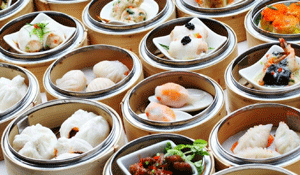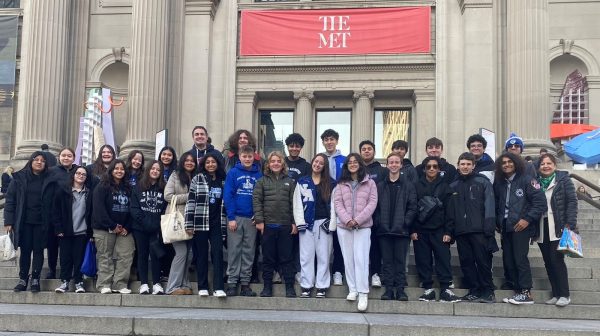Crazy for sum Dim Sum

It’s 8 o’ clock a.m. and my family is up and running, getting ready to travel to Chinatown. We skip breakfast, not because we’re running late, but because we are going to have a special one in Chinatown-Dim Sum.
Dim sum in Chinese means “touch the heart”. If you don’t already know, dim sum is the name of a style of Chinese dumpling, prepared in small, bite-sized pieces that originated from the Guangzhou region (more familiarly known as Canton). Dim sum is usually paired with drinking tea, so nowadays, going to have dim sum usually means to drink tea and eat cute little Cantonese-style dumplings.
This tradition began ages ago when travelers on the Silk Road would need a place to stay and rest, resulting in the opening of many teahouses. Later, with the discovery that tea aids in digestion, teahouses began offering little dumplings to go with the tea, thus integrating the tradition of dim sum into Chinese culture.
By the time my family arrives at Chinatown, the clock reads 10- Just in time for dim sum. Though many dim sum restaurants open as early as 5 in the morning, most people arrive for dim sum around mid-morning (9-10 a.m.). We enter the restaurant and are immediately seated. With the many tea options available (jasmine or green being very popular), we choose the chrysanthemum tea. Then comes the fun part – waitresses walk around, pushing carts filled with food, served and plated in little bamboo steamers. We choose which ones we would like and they stamp a paper card, which will be used to record all of the food we “order”. When opened up, the baskets are usually filled with various kinds of dim sum, but others also contain traditional and funky foods like chicken feet, which are surprisingly delicious. Sweets, like fried sesame balls and water chestnut jelly are served too, for people with a sweet tooth.
Most families eat dim sum on special occasions like family gatherings. That is the same case for my family. However, for me eating delicious food is only half of the experience, no matter how good the chicken feet are. The other half is being able to catch up and bond with my family. Usually, when I have dim sum, my family invites all of my relatives that live in Chinatown. Though I normally don’t engage in their conversations, it still feels amazing to just sit around and eat food while listening to everyone talk in our native language, something I would not hear often outside of my house. Having dim sum isn’t just about eating good food. More importantly, it is about being able to experience and reconnect with your traditions and culture.










